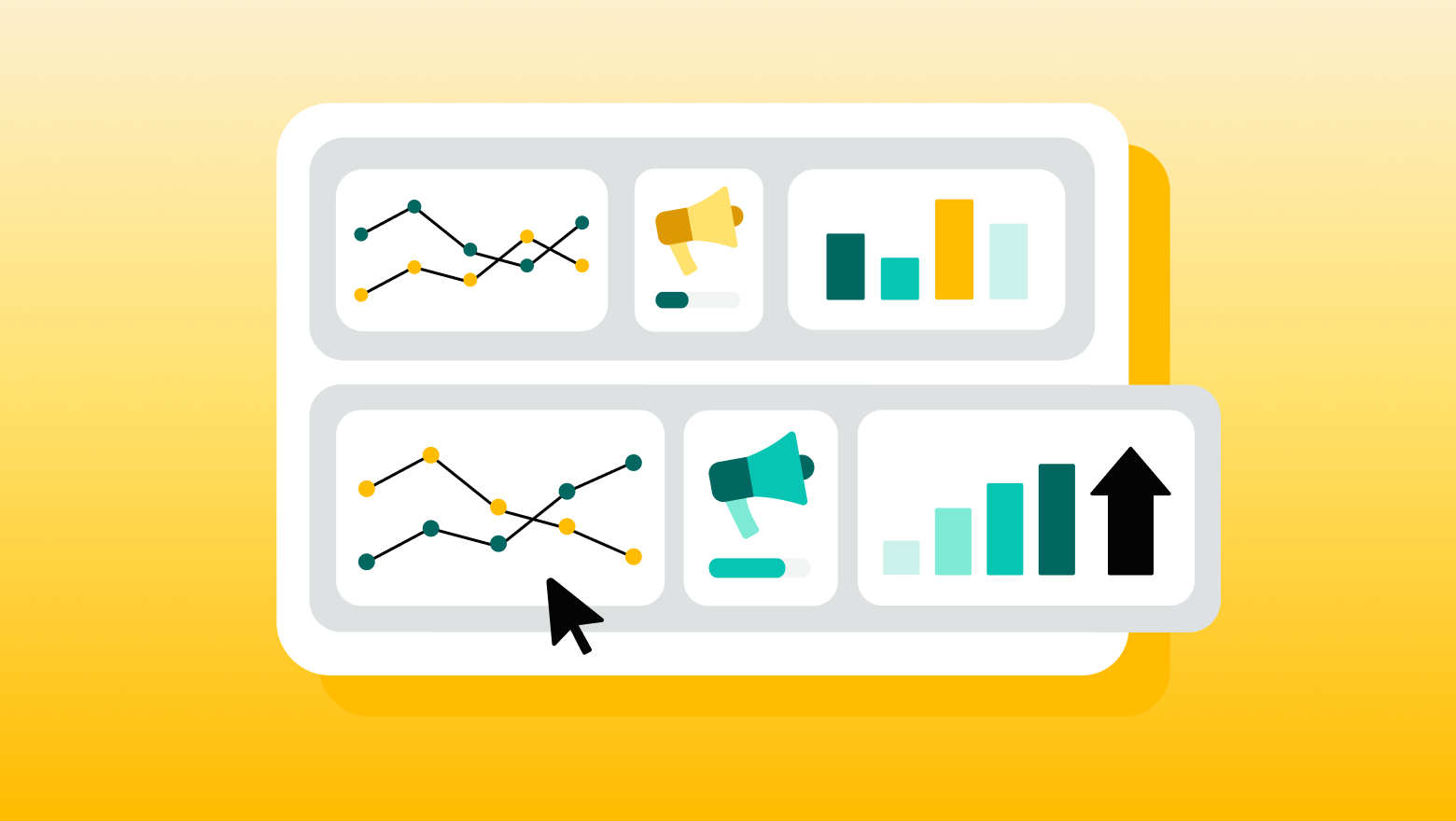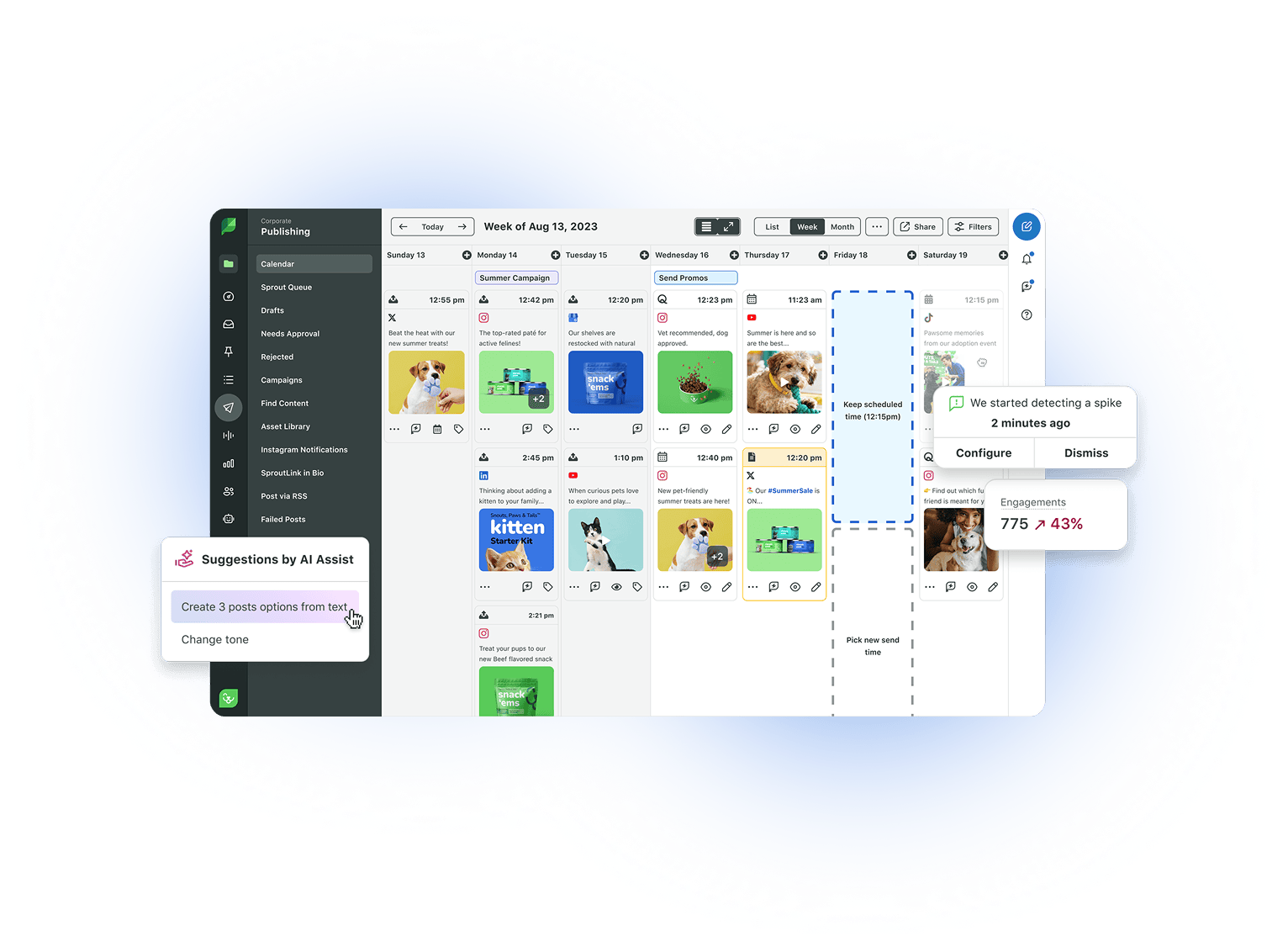5 influencer marketing KPIs to measure your next campaign

Table of Contents
The world of social media influencers has transformed significantly in recent years. What began as brands sending free products to popular social media users has now evolved into a multi-billion dollar industry, where contracted brand deals are closely aligned with targeted campaigns. Influencer marketing is no longer a novelty—it’s a critical component of advertising strategies.
Influencers don’t need celebrity status to make an impact for your brand. In fact, depending on your campaign goals, a nano-influencer could be an even stronger choice. To make the best decision in an influencer partner, clearly define your objectives for the partnership and then work backward to find the right fit.
In this guide, we’ll explore what influencer marketing key performance indicators (KPIs) are and why they matter. Plus, we’ll suggest a number of KPIs to get you started for your next influencer campaign.
What are influencer marketing KPIs?
Influencer marketing KPIs are essential to campaigns as they quantify the work both you and the influencer do. They define the overall ROI of the investment your brand made in partnering with a specific influencer. The KPIs you prioritize can guide which influencers you choose to work with, too.
Why are influencer marketing KPIs important?
Clearly defined goals set the foundation for stronger campaigns. Here are four specific benefits to setting KPIs for your next influencer partnership.
Measure influencer marketing ROI
KPIs offer the clearest insight into the impact of an influencer campaign.
Influencer marketing ROI can appear at any stage of the customer journey, from securing interest at the top of the funnel to converting a sale at the bottom of the funnel. Tracking appropriate KPIs will spotlight where and how your influencer campaigns reach your customers.
Set clear goals and benchmarks
Vague campaign goals will leave both you and your influencer partners frustrated. Clear KPIs let influencers know what’s expected of them upfront, ensuring a smoother collaboration after hiring.
The 2025 Sprout Social Index™ found that 65% of marketing leaders say demonstrating how social media campaigns are tied to business goals is crucial for securing social investment. Establishing clear benchmarks and KPIs allows you to directly link social traffic from influencers to conversions.

Optimize campaign performance
Influencer marketing KPIs are the guideposts in your campaign roadmap. As you and your influencer partners travel the campaign journey together, your KPIs serve as touchpoints to let you know you’re on the right track.
Optimize your influencer marketing campaigns by clearly defining key metrics and KPIs, and maintaining focus on them throughout the process. That way, you can make adjustments if the campaign starts veering off track.
Make informed partner selections
KPIs are an excellent tool to help you find the right influencers for your brand or campaign. If you truly need the most impressions possible, or want to break into a new market, a macro or even mega influencer with a large audience may be the best fit.
If engagement and brand sentiment are high on your list, a micro or nano influencer with an interactive, community-centric social media presence could be a great choice.
In this example, Portland, OR micro-influencer Candace Molatore worked with both Alaska Airlines and Portland International Airport to showcase the brand new terminal at the airport. Her post, which included a personal and sentimental connection to the airport, generated a significant amount of positive engagement from her audience. This influencer partnership was a great fit for driving engagement and enhancing the reputation of both brands.

Influencer marketing KPIs to start tracking
Once you have a solid understanding of why KPIs are important for influencer marketing, it’s time to select the ones that matter most for your brand’s goals. The KPIs you prioritize may change from campaign to campaign. Here are some common KPIs you can consider.
Reach and impressions
Reach and impressions are common metrics for many social media campaigns, making them natural KPIs for influencer marketing as well.
The right influencer partner can get you in front of potential customers you may struggle to reach via traditional advertising, including people who might not have considered your brand otherwise. Many influencers provide media kits that include average reach and impression numbers to set expectations upfront.
Earned media value
Marketing approaches typically involve two types of media: owned (the channels you have direct control of the content on, including social media, blogs, etc.) and earned (coverage of your brand that wasn’t purchased advertising and usually comes from PR efforts, such as television or print media mentions).
Earned media value (EMV) assigns advertising value to that earned coverage. This same metric can be applied to influencer campaigns. Likes, shares, comments and more all have value that can translate to social advertising dollars. A common formula for calculating EMV for an influencer campaign is:
Total impressions X Cost Per Mille (CPM) = EMV
CPM is the cost your brand pays per 1,000 impressions (“mille”) for a social ad. You can apply this to a specific social media network by using the CPM your brand normally pays in social ad campaigns.
Engagement
Social media engagement has become the gold standard of social marketing KPIs for good reason. Getting your content seen is one thing; getting potential customers to interact with your content is another.
Influencer marketing campaigns offer unique opportunities for your brand to engage with your target audience through likes, comments and shares. Influencers sharing products from brands they personally love often feels more authentic than a social ad a user was served randomly.
Conversions
Influencer campaigns can directly lead to conversions and even sales with the right approach. In fact, Sprout’s 2024 Influencer Marketing Report found that 86% of consumers make a purchase inspired by an influencer at least once a year.
To track conversions through your KPIs, you can focus on CPM and click through rate (CTR).
As mentioned, CPM is the cost your brand pays per 1,000 impressions for a social ad. CTR, on the other hand, refers to the percentage of people who click on an element they’ve been exposed to (think an affiliate link, newsletter sign up pop up, etc.).
In influencer marketing, these two KPIs show you both how many conversions were earned from the campaign and how much that same CTR would have cost in a regular advertising campaign.
Brand sentiment and awareness
Ideally, your overall brand awareness should increase as part of any influencer campaign. Brand sentiment is a nuanced KPI that speaks to how current customers, potential customers and the general public feel about your organization as a whole.
Conducting a sentiment analysis before and after an influencer campaign can highlight where and how the partnership made a difference.
How to select the right KPIs for your goals
KPIs vary for different brands and campaigns. To choose the best influencer marketing KPIs for your specific project, get clear on your goals and audience and be ready to adjust as needed.
Start with clear campaign objectives
Clear objectives and communication will start any influencer partnership off on the right foot. You need to be able to state the goals for your campaign. This may include things like generating sales, increasing brand awareness, launching in a new market or boosting customer sentiment.
Align KPIs with specific objectives
Your objectives should be specific, and your chosen KPIs should integrate with them. Include ideal outcomes and numbers where possible.
For example, if your influencer campaign has a goal of increasing positive customer sentiment by 25%, include KPIs around brand sentiment score and engagements like positive comments, likes and saves.
Consider your target audience
How well do you know your social media target audience? Knowing who they are and their social media habits will guide your KPI selection.
Are they a normally active audience that comments, shares and saves content? If not, that type of engagement might be a lower priority for you; alternatively, your influencer campaign could be an opportunity to encourage more community.
Use a mix of qualitative and quantitative KPIs
A simple number or statistic only tells you a small portion of the story. Conveying the ROI of your influencer marketing campaigns requires a mix of the quantitative and the qualitative.
A good data storytelling approach includes KPIs that speak to quantifiable info like reach and impressions as well as qualitative details like audience feedback and media coverage.
Continuously review and adjust your KPIs
KPIs for influencer marketing aren’t a “set it and forget it” part of your strategy. Once your partnership gets rolling, things may shift externally or internally that require some KPI reworking. You may see some unexpected demographics interacting with the influencer’s posts, or change in product development might present a new feature you can now announce. Don’t be afraid to be flexible and review, consider and adjust your KPIs as you go.
How to track and analyze influencer marketing KPIs
With your newly selected influencer marketing KPIs in hand, you’re ready to launch your project and start seeing the impact. We recommend implementing an influencer management tool and setting up proper tracking parameters to get the most out of your campaign.
Choose the right tracking tools
There are influencer marketing tools on the market that can support every stage of your projects, from influencer selection to daily management to campaign reporting.

Consider what tools you already have in place and whether they have features that translate to influencer marketing. You can also look into a tool specifically for your influencer program that covers all the bases.
For example, Sprout Social Influencer Marketing (formerly Tagger) offers an AI-powered platform to find and choose influencers, create your strategy, execute campaigns and measure performance.
Set up tracking parameters
In some cases, you’ll have a specific UTM link that your influencer partner can share with their audience. This is beneficial for sorting specific traffic the influencer sends your way and accurately tracking your KPIs.
Be sure to set up your tracking parameters before beginning your campaign to get the best insights possible. Some influencer marketing tools, like Sprout’s, offer link tracking in-platform.
Analyze data and draw insights
As soon as data starts flowing in, you can dive in on analysis. While a comprehensive review at the campaign’s end is important, you don’t have to wait until things wrap to extract valuable insights.
Keep an eye on each of the KPIs you set and watch for both the expected and unexpected. As the campaign continues, draw out key insights that show how things are going and where you might adjust.
Select the right influencer marketing KPIs for your next campaign
Influencer partnerships can be a boon for your brand, and choosing appropriate KPIs is foundational to campaign success. Stay nimble—the influencer world is still evolving, and your KPIs and campaigns can, too.
If you need a platform to help you keep track of influencer marketing KPIs and overall social media strategy, get a demo of Sprout’s influencer marketing tool today.



Share